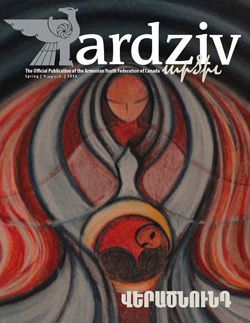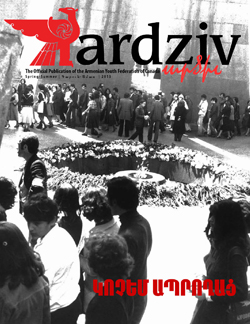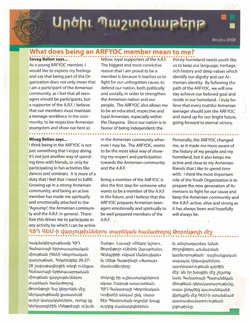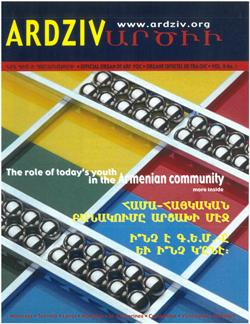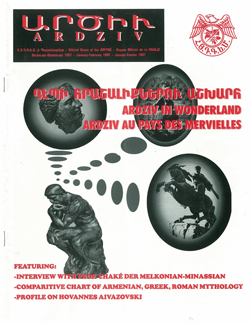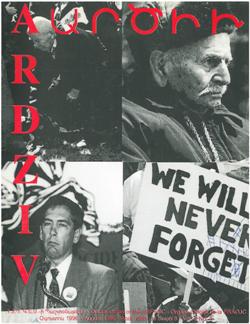Generating Health: A comparative study between the Canadian and Armenian Health Care Systems
By: Nareh Ghalustians | Posted on: 11.07.2012Warning: Undefined array key "ssba_bar_buttons" in /home/u108981792/domains/ardziv.org/public_html/wp-content/plugins/simple-share-buttons-adder/php/class-buttons.php on line 602
Warning: Undefined array key "ssba_bar_buttons" in /home/u108981792/domains/ardziv.org/public_html/wp-content/plugins/simple-share-buttons-adder/php/class-buttons.php on line 602
Warning: Undefined array key "ssba_bar_buttons" in /home/u108981792/domains/ardziv.org/public_html/wp-content/plugins/simple-share-buttons-adder/php/class-buttons.php on line 602
Warning: Undefined array key "ssba_bar_buttons" in /home/u108981792/domains/ardziv.org/public_html/wp-content/plugins/simple-share-buttons-adder/php/class-buttons.php on line 602
International health and human rights are important for the upcoming generation to understand. Health care and health status have been important issues discussed primarily in the modern era. It involves public health, and thus, has become a pressing subject matter, as it affects a country as a whole. A state’s health care system is the main resource of professional help for health-related services, and a comparative study of varying systems shows us that there is a large variety of approaches nations can take in addressing the well-being of their citizens. Such a study also demonstrates that many of these systems are limited in scope. This article aims to provide a very broad outline and comparison of the Canadian and Armenian health care systems, and to provide significant statistics about the health in those countries.
Health care systems of various countries involve creating a mosaic of policies that best manifest health concerns in the country for which it has been established for. In a recent article, Canadian professors Dennis Raphael and Toba Bryant1 were able to demonstrate that the most commonly employed approaches to public health place undue emphasis on immediate situational issues such as the social and physical environment of the individual, which has resulted in a lack of attention being paid to political and economic factors. That there is an observable correlation between improved public health and more holistic health care systems that take factors such as these into consideration necessitates a re-imagining of what health care can look like both in Canada and in Armenia. Critical perspectives regarding the impact of political and financial forces on the population of a country demonstrate that equality across social, economic, and political divisions is a crucial factor in building the best possible health care system. However, societies are not usually structured to favour better health, and globalization, the revoking of social provisions, free trade agreements, and the greedy, capitalistic mechanisations of states do not allow for all citizens to be treated as equals2. Market dominance and capitalistic motives produce both higher income inequality and lower social cohesion, which causes lower health status because it undermines the welfare state3.

Specialists designate the government of Canada“liberal” in its attitude towards public health. The primary focus of these types of governments is to provide for the basic needs for the people, allowing central institutions to revolve around the market2. The Canadian health care system was founded by Saskatchewan premier and New Democrat Party leader Tommy Douglas, commonly regarded as the father of Medicare. His vision was based on the principle of ensuring free care to all citizens4. The Medical Care Act of 1967 outlines the rights of all citizens to health coverage (universality), the right to all “medically necessary” services being covered (comprehensiveness), and all Canadian citizens and permanent residents being entitled to care regardless of where in Canada they live or travel (portability)4. In a publicly financed health care system like the one in Canada, all citizens contribute to a system of health insurance through their personal income and other taxes4.

Since independence, Armenia’s health care system has experienced various transitions that have turned a centrally run state system into a fragmented one that is largely financed through out-of-pocket payments from the citizens themselves5. The economic turmoil of the past 20 years has left Armenians with limited access to health care services; this is especially the case for the neediest segments of the population. Most of the services that are available, unfortunately, are often of questionable quality, as health care standards and quality assessment systems are vague and ineffective5. Armenians living in rural areas of the country (36% of the population) have access to facilities that lack modern medical technology and are unevenly distributed5. The commitment to free health care, thus, remains more declarative than factual, as informal payments – including, but not limited to, bribes – are still expected or required in many cases5. Life expectancy is relatively low and poverty levels are sizeable, while officially reported adult literacy and educational attainment have remained high5. Tertiary health care (i.e., highly specialized care) is usually provided through specialized single-purpose health care structures, mainly concentrated in Yerevan, and with a major focus on complex technologies, instead of using a more holistic approach and focusing on primary health care. Nonetheless, Armenia is increasingly engaged in improving the system from one that emphasizes the treatment of disease and response to epidemics towards a system that emphasizes prevention, family care, and community participation5. The shift towards a primary care orientation has been noticed, as health care workers have seen a gradual increase in their ability to influence the determinants of health in the country.

The key to better health lies in policies that allow programs to take a horizontal approach – a strategy that allows programs to target the source of the problem rather than just their superficial results. In my opinion, the primary focus of health care structures in Armenia should be to increase awareness of and education about the various ways in which citizens can improve their health. One example of a much-needed project is one that promotes individuals to stop smoking. To allow a more sustainable and long-term benefit, policies should follow the UN-affiliated World Health Organization’s Framework Convention on Tobacco Control (FCTC), which provides cost-effective guidelines for the first of five priority actions for the non-communicable disease crisis6. The FCTC is the first international health treaty adopted by the World Health Assembly in 2003, and has been ratified by more than 170 countries6. Methods of reducing tobacco use include raising tobacco taxes, legislation requiring health warnings, smoke-free work and public places, and a complete ban on all forms of tobacco promotion6.

The economic status and political affiliation of individuals is an important dynamic: the need for customized health care systems that cater to the people is a field in which Armenia needs change urgently. The need to bring these factors together in redesigning better health care systems is true in its own right – all facets of a patient’s life, including his or her social status and environment, must be taken into consideration. An individual that has a certain socio-economic status will show a different level of health and incidence of disease than one who has a different status. With greater education and stimulated interest, political and economic influences can be manifested towards generating health for the greater good, and leading to a healthier population as a whole.
Works Cited:
1. Raphael, D., & Bryant, T. (2006). Maintaining populationhealth in a period of welfare state decline: political economy as the missing dimensionin health promotiontheory and practice. IUHPE – Promotion and Education, XIII(4), 236-242.
2. Raphael. (2008). Getting serious about the social determinants of health: new irections for public health workers. IUHPE – Promotion and Education, 15(3), 15-20.
3. Coburn, D. (2000). Income inequality, social cohesionand the health status of populations: the role of neo-liberalism. Social Science and Medicine, 51, 135-146.
4. Raphael, D., Bryant, T., & Rioux, M. (2010). Staying Alive: Critical perspectives on health, illness and health care (2nd ed.).Toronto:Toronto: Canadian Scholars’ Press Inc.
5. Hakobyan, T., et al. (2006). Armenia: Health system review. Health Systems in Transition, 8(6), 1–180.
6. Beaglehole, R. et al. (2011). Priority actions for the non-communicable disease crisis. Lancet, 377, 1438-1447.
7. World Health Organization: Country health profiles forCanadaandArmenia.















